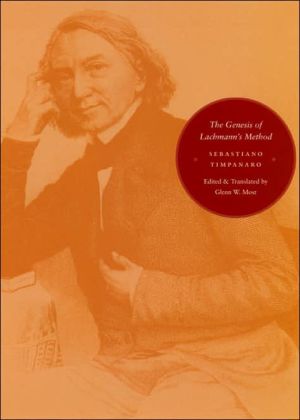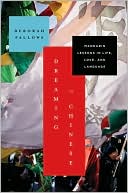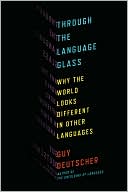The Genesis of Lachmann's Method
Until the modern period, the reproduction of written texts required manual transcription from earlier versions. This cumbersome process inevitably created errors and made it increasingly difficult to identify the original readings among multiple copies. Lachmann's method—associated with German classicist Karl Lachmann (1793-1851)—aimed to provide scholars with a scientific, systematic procedure to standardize the transmission of ancient texts. Although these guidelines for analysis were...
Search in google:
Until the modern period, the reproduction of written texts required manual transcription from earlier versions. This cumbersome process inevitably created errors and made it increasingly difficult to identify the original readings among multiple copies. Lachmann's method—associated with German classicist Karl Lachmann (1793-1851)—aimed to provide scholars with a scientific, systematic procedure to standardize the transmission of ancient texts. Although these guidelines for analysis were frequently challenged, they retained a paradigmatic value in philology for many years. In 1963, Italian philologist Sebastiano Timpanaro became the first to analyze in depth the history and limits of Lachmann's widely established theory with his publication, La genesi del metodo del Lachmann. This important work, which brought Timpanaro international repute, now appears in its first English translation. The Genesis of Lachmann's Method examines the origin, development, and validity of Lachmann's model as well as its association with Lachmann himself. It remains a fundamental work on the history and methods of philology, and Glenn W. Most's translation makes this seminal study available to an English-speaking audience. Revealing Timpanaro's extraordinary talent as a textual critic and world-class scholar, this book will be indispensable to classicists, textual critics, biblical scholars, historians of science, and literary theorists.
1Emendatio ope codicum from the humanists to Bentley452The need for a systematic recensio in the eighteenth century583The first phase of Lachmann's activity as a textual critic75Addendum to chapter 3824Lachmann as an editor of the New Testament845Contributions of Lachmann's contemporaries906Studies on the text of Lucretius1027What really belongs to Lachmann1158Textual criticism and linguistics, and their crises at the end of the nineteenth and in the twentieth century119App. ALachmann's first attempt at a mechanical recensio in 1817139App. BDetermining the script of lost manuscripts145App. CBipartite stemmas and disturbances of the manuscript tradition157
\ New RepublicTimpanaro's long-admired study of the philological method of Karl Lachmann\ — G.W. Bowersock\ \ \ \ \ Times Literary SupplementAmong the many virtues of Timpanaro's exceptionally lucid study is that it demonstrates the genealogy of this science of textual genealogy. . . . Far more than an account of the genesis of Karl Lachmann's method, this is the best possible assertion of why that method still matters today.\ — Matthew Leigh\ \ \ \ MLRA masterly analysis of the ways in which the modern method of editing texts came into being. . . . This is Timpanaro at his best.\ — Carlo Caruso\ \ \ \ \ \ London Review of Books“Sebastiano Timpanaro . . . [was] one of the purest and most original minds of the second half of the century.”--London Review of Books\ \ \ \ \ \ Michael Reeve“For the range and penetration of his work, Sebastiano Timpanaro can be numbered among the greatest intellectuals of his generation, in Italy or anywhere. The Genesis of Lachmann’s Method seems to me the best contribution that anyone has made in the last fifty years to the history of classical scholarship. The perfect balance [Timpanaro] achieves between methodological argument and historical exposition makes the book absorbing.” --Michael Reeve, series editor, Cambridge Classical Texts and Commentaries\ \ \ \ \ \ James E. G. Zetzel“Sebastiano Timpanaro was one of the most astonishing and versatile intellectual figures of the late twentieth century, with interests ranging from Latin literature to eco-politics. His book on Lachmann’s method is a fine example of his mastery of both philology and intellectual history. Glenn Most’s fine translation at last makes this brilliant book available in English, and his introduction and annotations explain Timpanaro’s changing views in a manner worthy of Timpanaro himself.”--James E. G. Zetzel, professor of classics, Columbia University\ \ \ \ \ \ \ New Republic\ - G.W. Bowersock\ "Timpanaro's long-admired study of the philological method of Karl Lachmann . . . recently appeared in a masterly English translation by Glenn Most."\ \ \ \ \ \ E.J. KENNEY"Sebastian Timpanaro was, like this book of his, in a class by himself. . . . [This translation] has been well worth waiting for. Most has done a first-rate job. . . The translation reads easily and naturally, and as has been said the annotation strikingly documents the naggingly perfectionist the character of Timpanaro's scholarship. The Introduction offers an admirable account of the man himself, his family background, his work in other fields, notably on Leopardi, and not least his lifelong engagement with the complicated and turbulent world of left-wing Italian politics."\ \ \ \ \ \ Times Literary Supplement\ - Matthew Leigh\ "Among the many virtues of Timpanaro's exceptionally lucid study is that it demonstrates the genealogy of this science of textual genealogy. . . . Far more than an account of the genesis of Karl Lachmann's method, this is the best possible assertion of why that method still matters today."\ \ \ \ \ \ MLR\ - Carlo Caruso\ "A masterly analysis of the ways in which the modern method of editing texts came into being. . . . This is Timpanaro at his best."\ \ \








